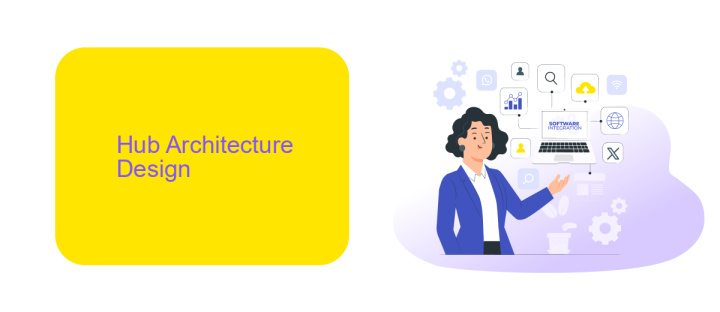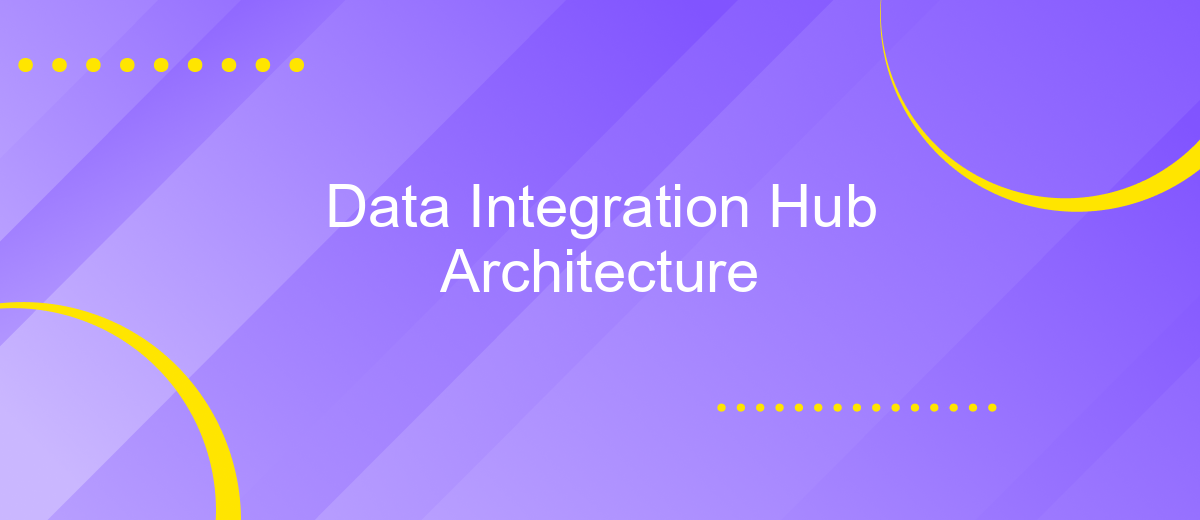Data Integration Hub Architecture
In today's data-driven world, integrating diverse data sources into a cohesive framework is crucial for informed decision-making. A Data Integration Hub (DIH) architecture serves as a centralized platform that streamlines data consolidation, transformation, and distribution across an organization. This article delves into the core components, benefits, and best practices of implementing a robust DIH architecture to enhance data accessibility and reliability.
Overview
Data Integration Hub Architecture is a centralized framework designed to streamline the process of integrating data from various sources into a cohesive system. This architecture ensures seamless data flow, consistency, and accessibility across different platforms and applications, making it easier to manage and utilize data effectively.
- Centralized data management
- Seamless data flow between systems
- Enhanced data consistency and accessibility
- Scalability to handle growing data volumes
- Support for diverse data sources and formats
One of the key components in setting up a Data Integration Hub is the use of integration services like ApiX-Drive. ApiX-Drive simplifies the process by providing a user-friendly interface to connect various applications and automate data transfers. This enables organizations to focus on data analysis and decision-making rather than dealing with the complexities of data integration.
Hub Architecture Design

The architecture of a Data Integration Hub is designed to centralize and streamline the process of integrating data from multiple sources. It typically consists of several layers, including data ingestion, processing, storage, and access. The ingestion layer is responsible for collecting data from various sources such as databases, APIs, and flat files. The processing layer handles data transformation, cleansing, and enrichment to ensure the data is in a usable format. The storage layer is where the processed data is stored, often in a data warehouse or data lake. Finally, the access layer provides interfaces for querying and analyzing the data, making it accessible to business users and applications.
To facilitate seamless integration, services like ApiX-Drive can be utilized within the Data Integration Hub architecture. ApiX-Drive offers a user-friendly platform that automates the data integration process, reducing the need for manual coding and configuration. It supports a wide range of data sources and destinations, making it easier to connect disparate systems. By leveraging such services, organizations can achieve faster implementation times, improved data accuracy, and greater flexibility in their integration workflows.
Data Integration Process

Data integration is a critical component in modern data management, enabling seamless data flow between various sources and systems. The process involves several key steps to ensure data is accurately and efficiently integrated.
- Data Extraction: This initial step involves retrieving data from various sources, such as databases, APIs, and flat files.
- Data Transformation: The extracted data is then transformed into a suitable format, which may include cleaning, normalizing, and enriching the data to meet the target system's requirements.
- Data Loading: Finally, the transformed data is loaded into the target system, such as a data warehouse or a cloud-based storage solution.
Tools like ApiX-Drive can significantly streamline this process by automating data extraction and transformation from multiple sources. ApiX-Drive offers pre-built connectors and an intuitive interface, making it easier for organizations to integrate data without extensive coding or manual effort. By leveraging such tools, businesses can enhance their data integration workflows, ensuring data consistency and availability across all systems.
Benefits and Challenges

Implementing a Data Integration Hub Architecture offers numerous benefits for organizations. It centralizes data from various sources, providing a unified view that enhances decision-making and operational efficiency. This architecture also improves data quality and consistency, as data is standardized and cleansed before integration.
However, there are challenges to consider. Setting up a Data Integration Hub can be complex and resource-intensive. Organizations must ensure robust security measures to protect sensitive data and comply with regulatory requirements. Additionally, integrating disparate data sources can be technically challenging and may require specialized skills.
- Centralized data management
- Enhanced data quality and consistency
- Improved decision-making
- Operational efficiency
To address these challenges, services like ApiX-Drive can be invaluable. ApiX-Drive offers a user-friendly platform for setting up and managing integrations, reducing the technical burden on IT teams. By automating data flows between applications, ApiX-Drive helps organizations streamline their data integration processes, ensuring timely and accurate data availability.
- Automate the work of an online store or landing
- Empower through integration
- Don't spend money on programmers and integrators
- Save time by automating routine tasks
Best Practices
Implementing a robust Data Integration Hub Architecture requires adherence to several best practices to ensure seamless data flow and integrity. First, prioritize data quality by establishing standardized data formats and validation processes before integration. This minimizes errors and inconsistencies, ensuring reliable data exchange across systems. Additionally, leverage automation tools like ApiX-Drive to streamline the integration process. ApiX-Drive offers a user-friendly interface and extensive API support, facilitating quick and efficient data connections between various platforms without the need for extensive coding.
Another crucial aspect is maintaining data security and compliance. Implement encryption protocols and access controls to protect sensitive information during transmission and storage. Regularly audit and update security measures to stay ahead of potential threats. Additionally, ensure scalability by designing the architecture to accommodate future growth and evolving business needs. This involves modular design principles and using scalable infrastructure solutions. By following these best practices, organizations can build a resilient Data Integration Hub that supports efficient and secure data management.
FAQ
What is a Data Integration Hub?
How does a Data Integration Hub improve data quality?
What are the key components of a Data Integration Hub architecture?
How can I automate data integration processes?
What are the benefits of using a Data Integration Hub?
Routine tasks take a lot of time from employees? Do they burn out, do not have enough working day for the main duties and important things? Do you understand that the only way out of this situation in modern realities is automation? Try Apix-Drive for free and make sure that the online connector in 5 minutes of setting up integration will remove a significant part of the routine from your life and free up time for you and your employees.


